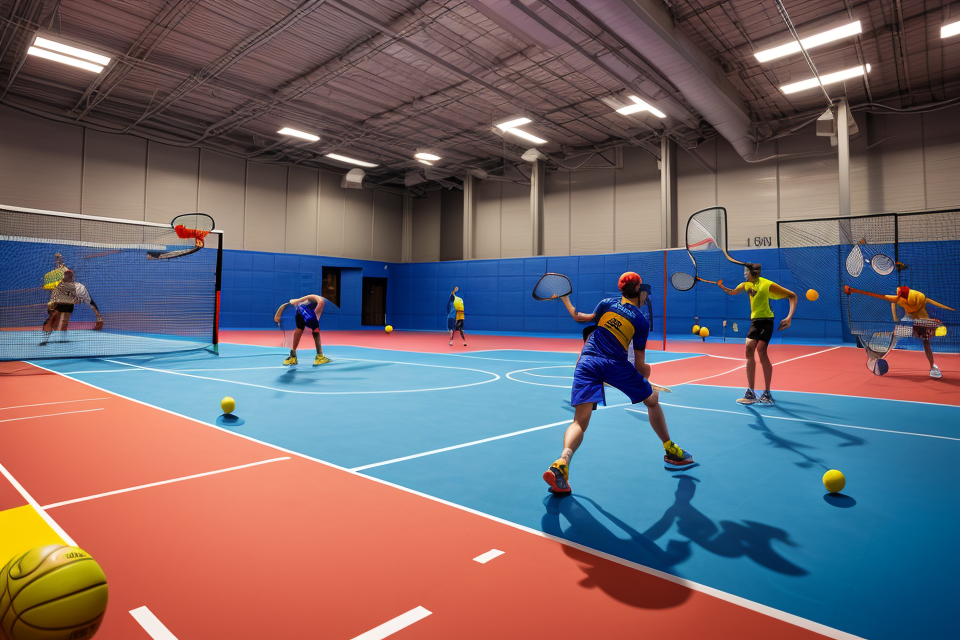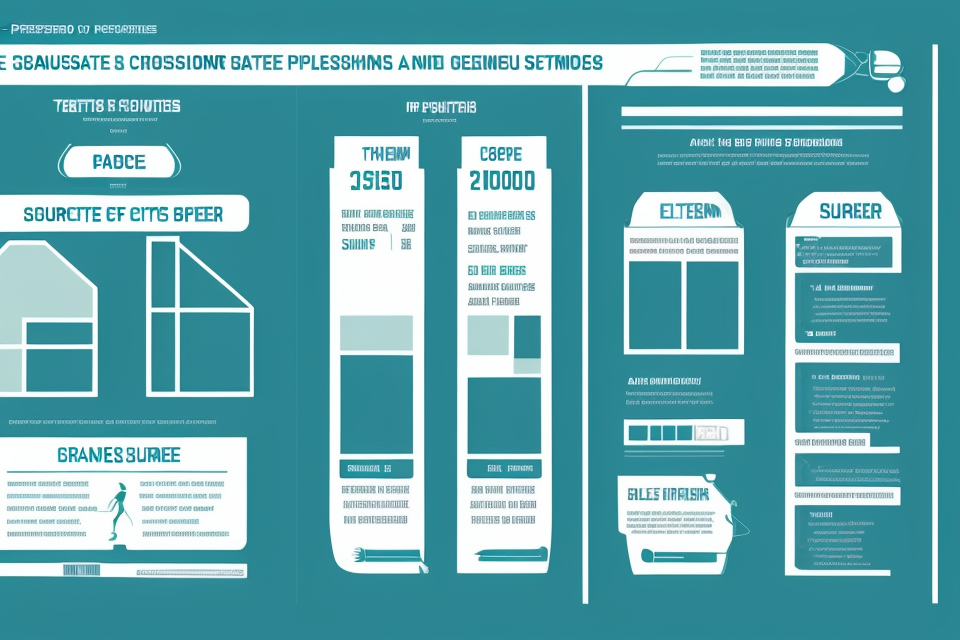Squash is a high-intensity sport that requires a combination of strength, endurance, and agility. Many people wonder if playing squash can help them build muscle. In this comprehensive guide, we will explore the potential of squash as a muscle-building activity and discuss the various factors that can influence muscle development. We will also look at the benefits of incorporating squash into your fitness routine and provide tips on how to maximize muscle gain while playing this exciting sport. So, whether you’re a seasoned squash player or just starting out, read on to discover how squash can help you build muscle and improve your overall fitness.
Understanding the Benefits of Squash for Muscle Building
The Cardiovascular Advantage
How squash improves cardiovascular health
Squash is a sport that is played with a small, heavy ball and a racquet. It is a high-intensity, aerobic sport that requires players to move quickly and change direction rapidly. As a result, squash can significantly improve cardiovascular health by increasing heart rate and blood flow.
The connection between cardiovascular health and muscle building
Cardiovascular health is essential for muscle building because it helps to deliver oxygen and nutrients to the muscles. When the heart and blood vessels are healthy, they can efficiently transport oxygen and nutrients to the muscles, which can help to improve muscle function and increase muscle mass. In addition, regular exercise, such as squash, can help to increase the number of capillaries in the muscles, which can further improve the delivery of oxygen and nutrients.
The Power of Speed and Agility
The Importance of Speed and Agility in Muscle Building
In the realm of muscle building, speed and agility play a crucial role. These factors contribute to overall athletic performance and can significantly impact an individual’s ability to excel in their chosen sport or physical activity. The development of speed and agility helps in enhancing one’s reflexes, reaction time, and coordination, which are all essential for muscle growth and improvement.
How Squash Develops Speed and Agility
Squash is a sport that requires quick movements, changes in direction, and rapid acceleration. It is a game that involves continuous running, jumping, and lunging, all of which contribute to the development of speed and agility. The small court size and the fast-paced nature of the game demand precise footwork, which is crucial for improving muscle control and balance.
Additionally, squash involves a great deal of arm movement, as players must frequently swing their rackets to hit the ball. This repetitive action can help build muscular endurance in the arms, shoulders, and back, leading to improved overall strength and performance.
Moreover, squash is a sport that requires mental agility and focus, as players must constantly adjust their strategies and react to their opponents’ movements. This mental component of the game can help improve cognitive function, which can also contribute to overall muscle development and performance.
In conclusion, squash is a sport that can greatly benefit muscle building due to its emphasis on speed and agility. The continuous movement, precise footwork, and repetitive arm movements all contribute to the development of muscular strength, endurance, and control. Additionally, the mental focus required in squash can also improve cognitive function, further enhancing overall athletic performance.
Building Strength and Endurance
When it comes to building muscle, there are many different types of exercises and activities that can be effective. Squash is one such activity that has been shown to provide numerous benefits for muscle building.
The Benefits of Building Strength and Endurance
Building strength and endurance is essential for anyone looking to improve their overall fitness level and muscle mass. Strength training exercises such as weightlifting and resistance training can help to increase muscle size and strength, while endurance training can help to improve cardiovascular health and increase the ability to perform physical activities for longer periods of time.
How Squash Helps to Build Strength and Endurance
Squash is a high-intensity sport that requires quick movements, changes of direction, and explosive jumps. As a result, playing squash can help to improve both strength and endurance. The physical demands of the game require players to be in top condition, and regular squash training can help to build the necessary physical attributes required for success on the court.
One of the key benefits of squash for muscle building is its ability to engage multiple muscle groups at once. Squash involves running, jumping, and changing direction, which means that it can help to build strength and endurance in the legs, core, and upper body. In addition, the sport requires quick movements and agility, which can help to improve overall body control and balance.
Furthermore, squash is a non-impact sport, which means that it is easier on the joints compared to high-impact sports like running or jumping. This makes it an excellent option for individuals who are looking to build muscle without putting too much strain on their joints.
Overall, squash is a versatile and challenging sport that can provide numerous benefits for muscle building. Whether you are a beginner or an experienced player, incorporating regular squash training into your fitness routine can help you to build strength, endurance, and overall physical fitness.
Nutrition for Muscle Building
The Importance of Proper Nutrition
Proper nutrition plays a crucial role in muscle building. Without adequate nutrition, your body will not have the necessary building blocks to repair and grow muscle tissue. Here are some key nutrients to consider when building muscle:
Protein
Protein is an essential macronutrient that is vital for muscle growth and repair. It is made up of amino acids, which are the building blocks of muscle tissue. Consuming adequate amounts of protein is crucial for muscle building, as it helps to promote muscle protein synthesis, which is the process by which muscle tissue is repaired and rebuilt after exercise.
Carbohydrates
Carbohydrates are another essential macronutrient that provides energy for physical activity, including muscle building exercises. They are broken down into glucose, which is used by the body for energy. Consuming adequate amounts of carbohydrates is important for muscle building, as it helps to replenish glycogen stores in the muscles and liver, which are depleted during exercise.
Fat
Fat is a necessary macronutrient that provides energy and helps the body absorb vitamins and minerals. While it is important to consume adequate amounts of fat, it is also important to be mindful of the type of fat consumed. Unsaturated fats, such as those found in avocados and nuts, are considered healthy fats and can help support muscle building.
Vitamins and Minerals
Vitamins and minerals are important for overall health and muscle building. Some key vitamins and minerals to consider include:
- Vitamin D: important for bone health and muscle function
- Calcium: important for muscle function and bone health
- Iron: important for red blood cell production and oxygen transport
- Zinc: important for immune function and wound healing
It is important to consume a balanced diet that includes a variety of nutrient-dense foods to support muscle building. In addition to consuming adequate amounts of protein, carbohydrates, fat, vitamins, and minerals, it is also important to stay hydrated and fuel your body with nutrient-dense foods before and after exercise.
Hydration and Electrolyte Balance
Hydration and electrolyte balance are crucial for muscle building and overall health. Proper hydration helps regulate body temperature, transport nutrients, and remove waste products. Electrolytes, such as sodium, potassium, calcium, and magnesium, help maintain fluid balance and support muscle contractions.
During squash, physical activity can lead to excessive sweating, which results in a loss of electrolytes and fluids. This can negatively impact performance and recovery. Therefore, it is essential to maintain proper hydration and electrolyte balance during and after squash.
To achieve this, you should:
- Drink plenty of water before, during, and after squash to replace lost fluids.
- Consume electrolyte-rich beverages, such as sports drinks, to replace lost minerals.
- Eat a balanced diet rich in fruits, vegetables, and whole grains, which are natural sources of electrolytes and other essential nutrients.
- Consider incorporating hydrating and electrolyte-rich foods, such as watermelon, coconut water, and bananas, into your diet.
By prioritizing hydration and electrolyte balance, you can optimize your performance and recovery during squash and support muscle building.
Squash Equipment for Muscle Building
Choosing the Right Racket
When it comes to choosing the right racket for muscle building, there are several factors to consider. Here are some key considerations:
- Grip size: The grip size of the racket is important as it affects the control and maneuverability of the racket during play. It’s recommended to choose a grip size that feels comfortable and secure in your hand.
- Weight: The weight of the racket can impact the speed and power of your shots. A heavier racket may provide more power, but it may also be more tiring to use during long matches. A lighter racket may be easier to handle, but it may not provide as much power.
- Balance: The balance of the racket refers to the distribution of weight throughout the racket. A racket that is head-heavy may provide more power, but it may be harder to control. A racket that is evenly balanced may be easier to control, but it may not provide as much power.
- String tension: The string tension of the racket can impact the control and power of your shots. A higher string tension may provide more control, but it may also reduce the power of your shots. A lower string tension may provide more power, but it may also reduce the control of your shots.
Based on these factors, here are some recommended rackets for muscle building:
- Head Graphene XT Instinct MP: This racket is lightweight and evenly balanced, making it easy to handle and control. It also has a high string tension, which can provide more control over your shots.
- Wilson Blade 90S: This racket is head-heavy and has a heavier weight, making it ideal for players who want more power in their shots. It also has a high string tension, which can provide more control over your shots.
- Prince Textreme Tour 100P: This racket is head-heavy and has a heavier weight, making it ideal for players who want more power in their shots. It also has a lower string tension, which can provide more power in your shots.
By considering these factors and choosing the right racket for your playing style, you can optimize your performance on the squash court and achieve your muscle-building goals.
Warm-Up and Cool-Down Exercises
Warm-up and cool-down exercises are crucial components of any physical activity, including squash. These exercises help to prepare the body for physical activity and to prevent injury.
The Importance of Warm-Up and Cool-Down Exercises
Warm-up exercises are designed to increase blood flow to the muscles, increase flexibility, and raise the body’s core temperature. This prepares the body for physical activity and reduces the risk of injury. Cool-down exercises, on the other hand, are designed to reduce muscle soreness, prevent stiffness, and improve flexibility.
Examples of Warm-Up and Cool-Down Exercises for Squash
Before starting a game of squash, it is important to perform a few warm-up exercises to prepare the body for physical activity. Some examples of warm-up exercises for squash include:
- Light jogging or walking to increase the heart rate and warm up the muscles
- Stretching exercises to increase flexibility and prevent injury
- Jumping jacks or lunges to increase the heart rate and warm up the muscles
After a game of squash, it is important to perform a few cool-down exercises to prevent muscle soreness and improve flexibility. Some examples of cool-down exercises for squash include:
- Stretching exercises to improve flexibility and prevent stiffness
- Deep breathing exercises to reduce muscle soreness and improve circulation
- Foam rolling or massage to reduce muscle soreness and improve circulation
In conclusion, warm-up and cool-down exercises are crucial components of any physical activity, including squash. These exercises help to prepare the body for physical activity and to prevent injury. Examples of warm-up exercises for squash include light jogging or walking, stretching exercises, and jumping jacks or lunges. Examples of cool-down exercises for squash include stretching exercises, deep breathing exercises, and foam rolling or massage.
Developing a Squash Training Program for Muscle Building
Setting Goals
Setting goals is an essential aspect of developing a squash training program for muscle building. Goals provide direction and motivation, helping you stay focused and committed to your fitness journey. When setting goals, it is crucial to consider the following points:
- Setting realistic and achievable goals: It is important to set goals that are challenging but attainable. Unrealistic goals can lead to frustration and discouragement, whereas achievable goals can provide a sense of accomplishment and motivate you to continue pushing yourself.
- The importance of tracking progress: Tracking your progress is crucial in measuring your growth and determining whether you are on track to achieve your goals. This can be done by keeping a training journal, taking measurements, or using fitness tracking apps.
Additionally, it is recommended to set both short-term and long-term goals. Short-term goals provide immediate feedback and help maintain momentum, while long-term goals offer a sense of purpose and direction.
By setting realistic and achievable goals and tracking progress, you can ensure that your squash training program is effective and efficient in helping you build muscle.
Designing a Training Program
When it comes to designing a training program for muscle building, there are several key factors to consider. First and foremost, it’s important to ensure that your program includes a variety of exercises that target different muscle groups. This will help to ensure that you’re able to build muscle evenly across your body, rather than focusing on specific areas.
One of the best ways to do this is to incorporate both strength and endurance training into your program. Strength training involves performing exercises that use resistance to build muscle, such as weightlifting or bodyweight exercises like push-ups or squats. Endurance training, on the other hand, involves exercises that build cardiovascular fitness and help to improve your overall endurance, such as running or cycling.
When designing your training program, it’s important to keep in mind that building muscle takes time and consistent effort. It’s not something that can be achieved overnight, and it’s important to be patient and consistent in your training.
It’s also important to pay attention to your nutrition and make sure that you’re consuming enough protein to support muscle growth. Protein is an essential nutrient that plays a key role in muscle repair and growth, so it’s important to make sure that you’re getting enough of it in your diet.
In addition to these key factors, it’s also important to listen to your body and make adjustments to your training program as needed. If you’re feeling tired or sore, it may be necessary to take a day off or reduce the intensity of your workouts. On the other hand, if you’re feeling energized and ready to push yourself, you may be able to increase the intensity of your workouts to continue building muscle.
Overall, designing a training program for muscle building requires careful consideration of a variety of factors, including the types of exercises you’ll be performing, the intensity of your workouts, your nutrition, and your overall health and wellbeing. By paying attention to these factors and making adjustments as needed, you can create a training program that will help you build muscle and achieve your fitness goals.
Recovery and Injury Prevention
Recovery and injury prevention are crucial components of any athletic training program, including squash. Recovery refers to the processes that allow the body to repair and rebuild the muscles and other tissues that have been stressed during training. Injury prevention involves taking steps to reduce the risk of injury during training and competition.
Effective recovery and injury prevention strategies for squash players include:
- Warming up and cooling down properly before and after each training session or match
- Incorporating stretching and flexibility exercises into the training program
- Gradually increasing the intensity and duration of training over time to avoid overuse injuries
- Allowing adequate rest and recovery time between training sessions and matches
- Strengthening weaknesses and imbalances in the body to prevent injuries
- Properly hydrating before, during, and after training and competition
- Maintaining a healthy diet to support recovery and injury prevention
By following these guidelines, squash players can reduce their risk of injury and improve their ability to recover and adapt to the demands of training and competition.
FAQs
1. Is squash a good exercise for building muscle?
Answer: Squash is a great exercise for building muscle as it engages multiple muscle groups in each movement. The dynamic nature of squash means that it is an effective workout for developing functional strength and endurance. The high intensity and quick changes of direction also increase your heart rate and burn more calories, making it a great cardiovascular workout.
2. What muscles does squash work?
Answer: Squash is a full-body workout that targets several muscle groups, including the legs, core, arms, and shoulders. The legs bear the brunt of the workout, as they are used to move around the court and make quick changes of direction. The core is also worked as it helps maintain balance and stability during movement. The arms and shoulders are used to swing the racquet and make shots.
3. How often should I play squash to build muscle?
Answer: To build muscle through squash, it is recommended to play at least three to four times a week. Consistency is key when it comes to building muscle, and regular play will help to improve muscle endurance and increase muscle mass over time. However, it is important to listen to your body and not overdo it, as rest and recovery are also important for muscle growth.
4. Are there any specific exercises I can do to target muscle growth in squash?
Answer: There are no specific exercises that can be done to target muscle growth in squash, as the game itself is a full-body workout. However, incorporating strength training exercises such as lunges, squats, and planks into your fitness routine can help to improve muscle endurance and increase muscle mass. Additionally, focusing on proper form and technique during squash play can help to target specific muscle groups and prevent injury.
5. How long does it take to see results from playing squash to build muscle?
Answer: The amount of time it takes to see results from playing squash to build muscle can vary depending on several factors, including your starting fitness level, the frequency and intensity of your workouts, and your overall diet and lifestyle. However, with consistent effort and dedication, you can expect to see improvements in muscle endurance and muscle mass within a few weeks to a few months.










